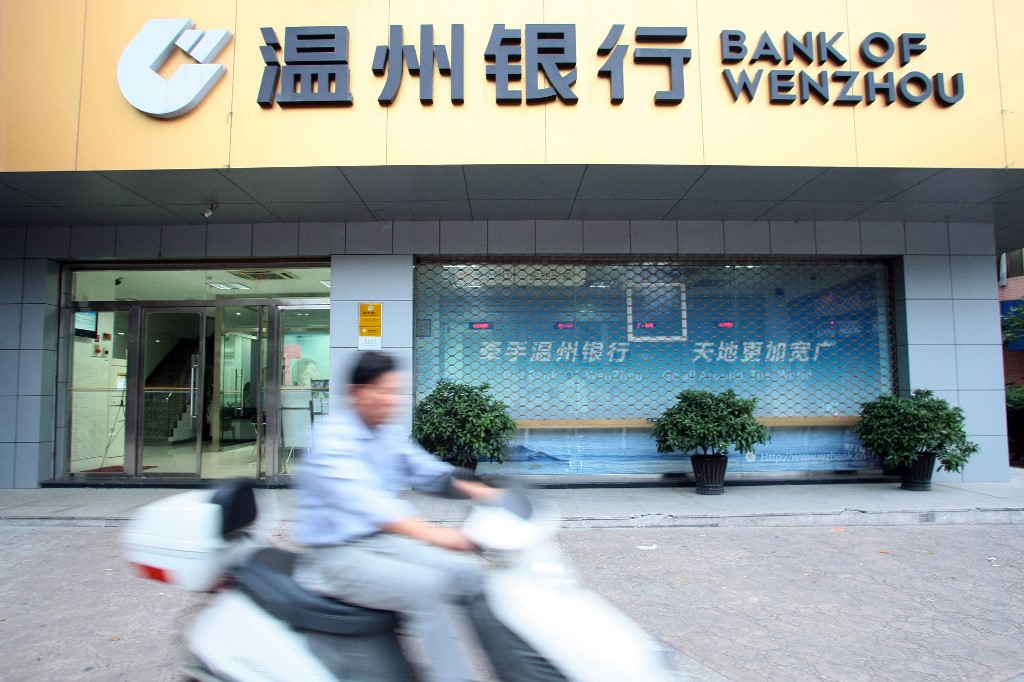(ATF) As China’s banks plan to recapitalise, news has emerged that small and medium sized banks are first in the queue.
There has been strong demand for supplementary funds this year. At the same time, the channels and methods for small and medium banks to replenish capital are constantly changing and expanding.
First in line is Wenzhou Bank, which disclosed its plan for a capital increase and share expansion, to raise funds for the first time through local special bonds.
Top-level support for these small commercial banks is strong as they are closer to “the real economy” and top finance officials want them to enhance their ability to withstand risks.
Professor He Yanlin from the China School of Finance said in an interview on Jintou (cngold.org) that local government special bonds are used to supplement the capital of small and medium-sized banks. This not only broadens the scope of use of special debts, but also expands the channels for small and medium-sized banks to supplement capital. The bank’s core Tier-1 capital will further consolidate and optimise, and the capital structure of small and medium banks are improved.
“For a large number of non-listed small and medium-sized banks, the capital supplement of local special bonds is of great significance,” He said.
The Bank of Wenzhou has increased its capital and shares seven times since it was established. Due to the addition of “new factors”, the new capital increase and share expansion has attracted much attention in the sector. Wenzhou, south of Shanghai, is well known for financial savvy in China.
Wenzhou Bank will issue a capital increase plan for no more than 7.3 billion yuan ($1.07 billion). After deducting expenses, the funds raised from the issuance will be used to supplement the Bank’s core Tier-1 capital and dispose of non-performing assets.
Focus on funds for SMEs
On July 1 this year, the State Council executive meeting decided to focus on improving the financial service capabilities of small and medium-sized enterprises and allowing local government special bonds to reasonably support small and medium-sized banks to supplement capital.
According to Liu Rong, deputy director of the City Banking Department at the China Banking Regulatory Commission, the government’s special debt limit is 200 billion yuan, set aside to support small and medium-sized banks in 18 regions. The provincial governments are responsible for formulating specific plans. At present, some provinces and cities have begun to study the use of this funding opportunity.
Bank of Wenzhou’s capital increase and share expansion plan is the first case in which small and medium banks will inject funds from local special bonds.
He Yanlin said that the coronavirus epidemic encouraged the move to using local government special bonds to support small and medium-sized banks to replenish capital. This lets local governments become shareholders in local banks, and helps clarify local government debts, and clarify the rights and responsibilities of banks. This is in line with the corporate governance structure of small and medium banks.
He Yanlin also pointed out that due to the large number of small and medium-sized banks in China, the situation in various provinces is different. In practice, banks in different provinces and different types of institutions in the same province will also choose different solutions.
He Yanlin emphasised that there are issues that officials need to be pay attention to in the future: Firstly, tool of bond subscription means an expansion of the scope of special bonds, and the investment direction of special bonds needs to be adjusted accordingly. Secondly, there may be a mismatch between the maturity of special bonds and the maturity of convertible bonds. After convertible bonds are converted into stocks, there will be no fixed term, while special bonds are generally issued for 10-15 years. Therefore, the exit mechanism needs appropriate attention.
Since the beginning of this year, commercial banks in China have used too much capital. According to data disclosed by the China Insurance Regulatory Commission, as of the end of the second quarter, the capital adequacy ratio of the banking industry was 14.21%, a decrease of 0.43% from the beginning of the year.
This situation is more pronounced in small and medium banks. As of the end of June, the capital adequacy ratios of city commercial banks and agricultural commercial banks were 12.56% and 12.23%, respectively, and the urgency of replenishing funds has become more prominent.
Zhou Kunping said there are currently more than 4,000 small and medium-sized banks in China, and noted that such banks play an important role in serving small and medium-sized enterprises, especially since the beginning of this year, whether to help prevent and control the epidemic or resume production. So, the role of small and medium banks in supporting small and medium enterprises, has become increasingly pronounced.
























